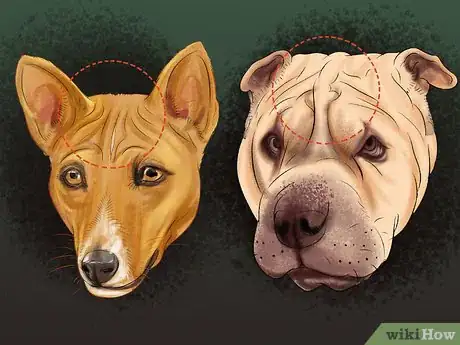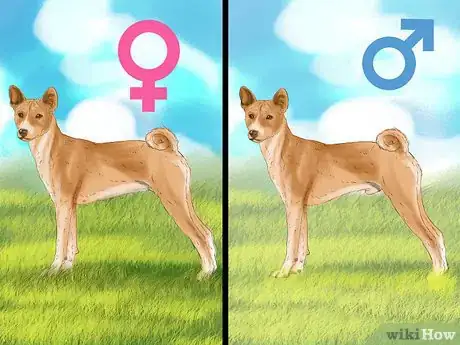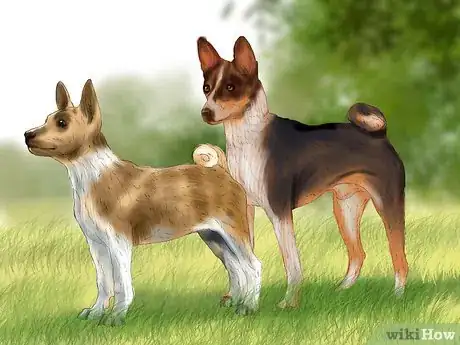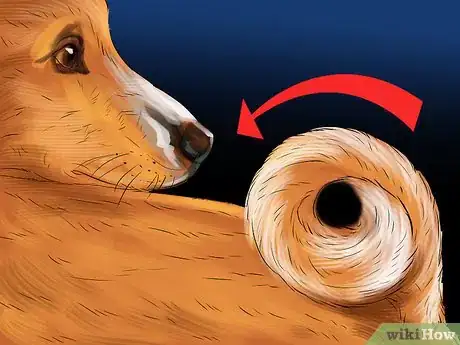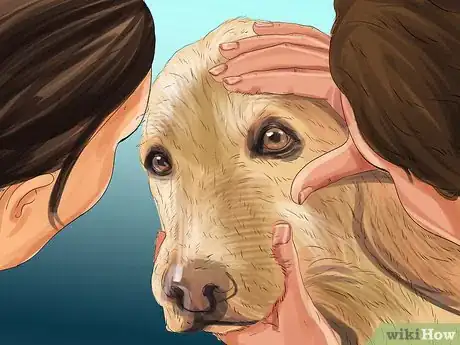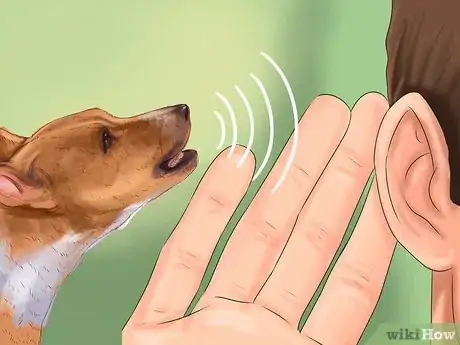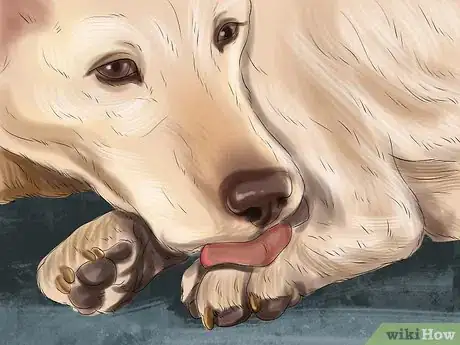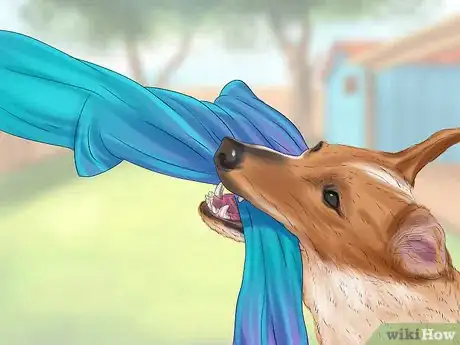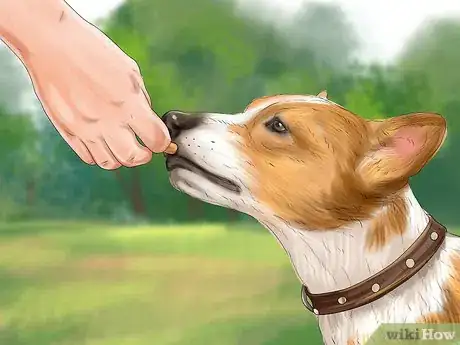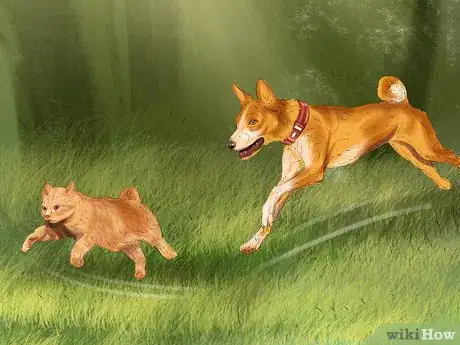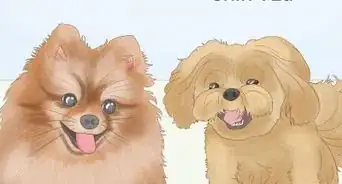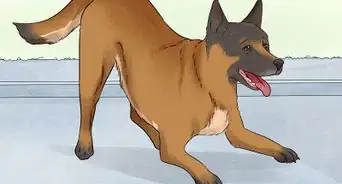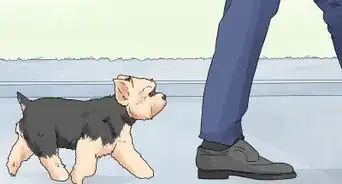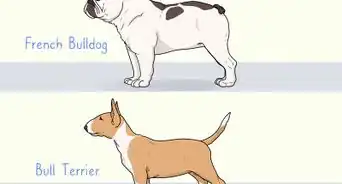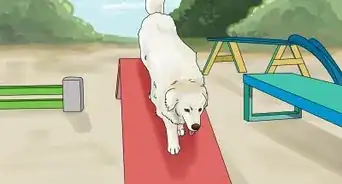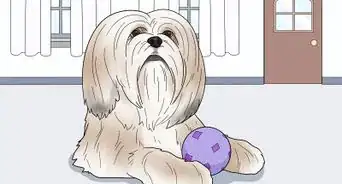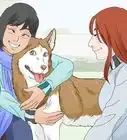This article was co-authored by Melissa Nelson, DVM, PhD. Dr. Nelson is a Veterinarian who specializes in Companion and Large Animal Medicine in Minnesota, where she has over 18 years of experience as a veterinarian in a rural clinic. She received her Doctor of Veterinary Medicine from the University of Minnesota in 1998.
There are 11 references cited in this article, which can be found at the bottom of the page.
This article has been viewed 45,905 times.
While not particularly well-known, Basenjis have many unique physical features and behavioral traits that distinguish them from other terriers and hunting dogs. You'll notice their large pointed ears, for instance, as well as their wrinkled foreheads and the way their tails curl. If you're wondering how a Basenji will act in your home, be prepared for cat-like behavior and a dog that you'll need to engage in play regularly so it doesn't get bored.
Steps
Evaluating Physical Characteristics
-
1Look for a wrinkled forehead. One of the Basenji’s most distinctive features is its forehead, which displays a Shar-Pei-like wrinkle at all times. This can lend a puzzled or anxious expression to its face, but it’s just the natural fold and texture of its skin.
- This wrinkle may seem more pronounced in puppies, who have more excess skin and folds. It will also be less noticeable in Basenjis with brindled, black, or tricolored coats.[1]
-
2Check that both ears are large and erect. Looking at a Basenji, you may recall the sharp, pointed ears of the ancient Egyptian god Anubis. This resemblance is not accidental: in fact, the Basenji is one of the most ancient dog breeds and appears in many Egyptian hieroglyphs as early as 4000 B.C.
- The Basenji’s ears stand at the top of the flat skull and point directly upward. Many experts argue that this adaptation derives from the fact that Basenjis use both sight and sound to hunt. It’s also thought that the large surface area of the ears helps to dissipate heat.
Advertisement -
3Measure and weigh the dog. Basenjis are medium-sized dogs, measuring 16-17 inches at the shoulder and 16-17 inches from chest to buttocks. They are lightly-built dogs, weighing 22-24 pounds.[2]
- Expect female Basenjis to fall on the lower end of height and weight averages, typically weighing one to two pounds less than males and standing one inch shorter.
-
4Inspect the dog's coat. A Basenji has short, fine fur. Their most recognizable color is perhaps chestnut red, but they also occur in pure black, tricolor (pure black and chestnut red), and brindle—that is, black stripes on a background of chestnut red.[3]
- No matter what color the coat is, a Basenji will have white on the feet, chest, and tip of the tail. Sometimes the legs and collar (the fur around the dog’s neck) will also be white.
-
5Look for a curled tail. Aside from the Basenji’s erect ears and wrinkled forehead, its tightly curled tail is perhaps its most notable characteristic. Curling back over the dog’s rump, the tail starts thick at its base and tapers into a thinner point.[4]
- The tightness of the tail’s curl depends on the Basenji’s current mood and excitement level. The more stimulated and buoyant the dog is, the more tightly curled the tail will be.
-
6Check with an expert. If you're having trouble deciding whether or not a dog is a Basenji, ask a local expert to help. A veterinarian should be able to check for distinguishing characteristics, or you could visit a local dog club where they might have an expert who can identify this particular breed.
-
7Get the dog’s DNA tested. One way to be certain that a dog is partially or entirely Basenji is to get a DNA test done. A number of dog DNA tests are available on the market, generally starting at around $60 USD. Tests are available online or at most pet supply stores.[5]
- While most tests require only a cheek swab, some may require a blood sample that has to be collected by a veterinarian. Call your vet to find out how much they charge for blood testing.
Observing Basenji Behavior
-
1Listen to what noises the dog makes. The larynx of the Basenji is shaped differently from most other dogs, meaning that the Basenji doesn’t make the same barking sound that other dogs do. It’s largely silent, making it a great dog for people who have small children or live in apartment buildings.[6]
- When the Basenji does make a noise, it does so in a whining cry, howl, drawn-out yodel, or short, isolated “fox bark” also known as a "baroo"[7]
-
2Observe the dog’s social demeanor. Most Basenji owners remark that Basenji’s behavior more closely resembles that of cats than that of a typical dog. Stubborn, independent, and reserved, it likes to play, but it is unlikely to be a social butterfly in the dog park or with your visiting friends.[8]
- Like a cat, most Basenjis will form a close bond with only one or two members of the household.
- Basenjis may have difficulty getting along with other dogs, and especially with other Basenjis, since they are territorial and rank-oriented.[9] In general, they get along best with non-Basenjis of the opposite sex.[10]
-
3Look for cat-like grooming behavior. Unlike many dog breeds, the Basenji is a fastidious self-groomer and pays particular attention to its paws. Such scrupulousness means that it rarely requires human-assisted bathing and emits minimal odor.[11]
- In addition to their curiously feline grooming habits, look for little to no shedding.[12]
-
4Expect destructive, inquisitive behavior when left alone. Perhaps one of the most notable behavioral characteristics of the Basenji is its curiosity, craftiness, and destructiveness when left alone. Many Basenji owners report having to keep all cabinets and garbage receptacles tightly locked and countertops kept clean, as their dogs can get into practically anything when left to their own devices.[13]
- Basenjis will devour any accessible edibles or household products, and they also love to shred paper products, such as tissues, toilet paper, and paper towels.
-
5Observe the dog’s obedience. While Basenjis make great household pets, they aren’t the easiest dogs to train. Their independent natures and ancient instincts make them less submissive than other breeds, so an owner will have to be firm and consistent when handling them.
- Due to their stubbornness and independence, a Basenji responds best to positive reinforcement. When training their dogs, Basenji owners report best results when rewarding positive behavior with treats rather than scolding or jerking the leash when it does something wrong.[14]
-
6Look for chasing and hunting behaviors. Due to their long histories as hunting dogs, Basenjis love to chase anything and everything, including other dogs, squirrels, cats, and small children. Basenjis can still coexist with cats or other dogs, but these other pets will have to either get used to being pursued or learn not to run away from the chase-happy Basenji.[15]
- A Basenji should not be trusted off the leash in the way that some obedient, low-key breeds can. Likely to bolt the minute it spots a dashing squirrel or dog, it’s particularly vulnerable to getting hit by cars and getting lost.[16]
References
- ↑ http://images.akc.org/pdf/breeds/standards/Basenji.pdf?_ga=1.56610159.556682293.1478380197
- ↑ http://images.akc.org/pdf/breeds/standards/Basenji.pdf?_ga=1.56610159.556682293.1478380197
- ↑ http://www.akc.org/dog-breeds/basenji/
- ↑ https://ckcusa.com/breeds/basenji/
- ↑ http://pets.webmd.com/dogs/features/dog-dna-testing#1
- ↑ https://basenjicompanions.org
- ↑ http://www.animalplanet.com/breed-selector/dog-breeds/hound/basenji.html
- ↑ http://www.animalplanet.com/breed-selector/dog-breeds/hound/basenji.html
- ↑ http://www.petmd.com/dog/breeds/c_dg_basenji
- ↑ https://basenjicompanions.org/
- ↑ https://www.basenji.org/BasenjiU/Owner/Handbook/HandPDF/UnderstandingOG.pdf
- ↑ https://www.basenji.org/BasenjiU/Owner/Handbook/HandPDF/UnderstandingOG.pdf
- ↑ https://www.basenjirescue.org/Reality%20Stories/Good-Bad-Ugly.htm
- ↑ https://basenjicompanions.org
- ↑ https://www.basenjirescue.org/reality%20stories/Good-Bad-Ugly.htm
- ↑ https://basenjicompanions.org
About This Article
To identify a Basenji dog, check to see if the dog has a wrinkled forehead, which is one of its most common features. Additionally, expect to see its ears positioned at the top of its head and pointing directly upwards. You should also look for short, fine fur, and a tail that curls over its rump. If you're still unsure, listen to the noises it makes, since Basenjis tend to whine or howl, rather than bark. For tips on how to identify a Basenji based on its social behavior, read on!
